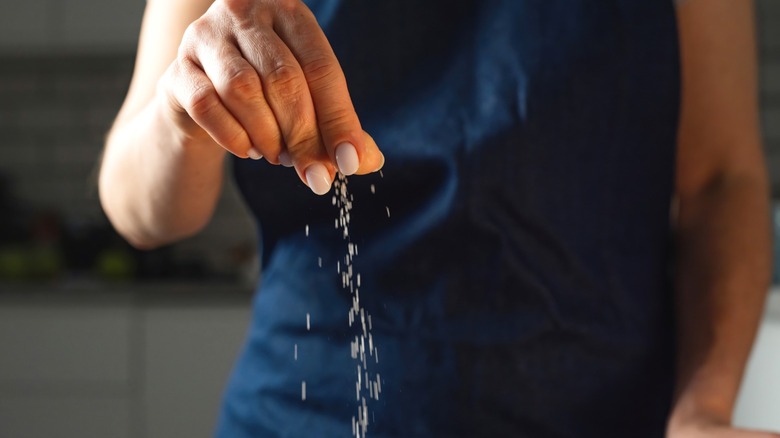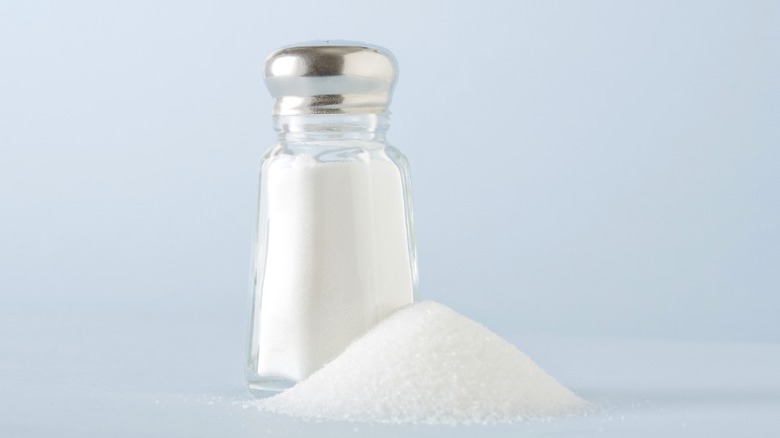What Does A Pinch Really Mean In A Recipe?
Food science has become quite popular in recent years, thanks in part to personalities like J. Kenji López-Alt and Alton Brown. (Thanks, R.E.M., for giving him his career.) But, for all the benefits of a rigorous, rigid approach in the kitchen, one of the great things about cooking is that it doesn't have to be an exact science. Sure, you can carefully season your steak and let it rest for the optimal length of time, prepare it in a sous vide device, then finish it off with a ripping hot reverse sear — or you could just apply some quick S&P and cook that bad boy on your grill. It'll still probably come out pretty tasty. (Contrast with baking, a famously fussy discipline whose practitioners will wait for dough to rise with the fraught anticipation of a Manhattan Project scientist during the countdown to the Trinity test.)
In this spirit, a "pinch of salt" seems appropriately loosey-goosey. How much salt are you supposed to use for a given dish? We dunno, man, just a pinch. A dash. A skosh, if you will. Don't worry about it. With that said, although many chefs do use those inexact terms as "eyeball" metrics, there actually is an amount of salt that equals a "pinch": it's around 1/16th of a teaspoon. (A dash, meanwhile, is about ⅛ teaspoon; as for a skosh, that's above our pay grade.)
How do you measure out a pinch of salt?
Maybe it's been a while since you've had to break out your measuring spoons, but you probably already know that you don't have a 1/16th teaspoon measure. The smallest size spoon you're likely to see is ⅛ teaspoon, or, more likely, a ¼ teaspoon as the littlest option. Luckily, you remember just enough of your fractions homework from middle school, and you know what to do: just half-fill a ⅛ measuring spoon or fill a quarter of a ¼ measuring spoon, and you'll have your pinch.
Alternatively, you can just use your fingers. Depending on how large your hands are, your pinch may be bigger or smaller than another person's, but chances are it'll get the job done just fine. Whether you're adding some salt to taste for a soup or sauce, or you're just adding a bit of garnish, your fingers likely won't steer you wrong. Just be sure you're using kosher salt if you're cooking, and if you add too much, be sure to balance it out with some acidity.

